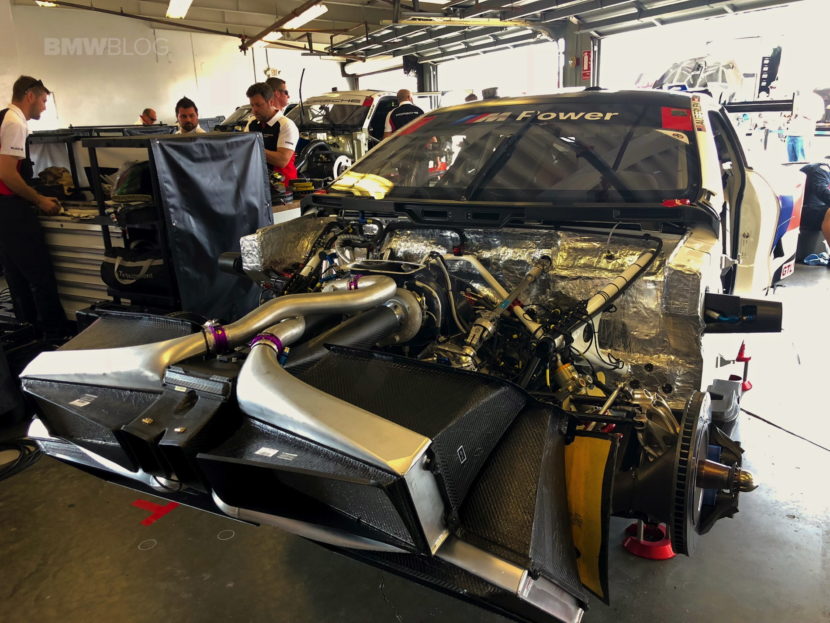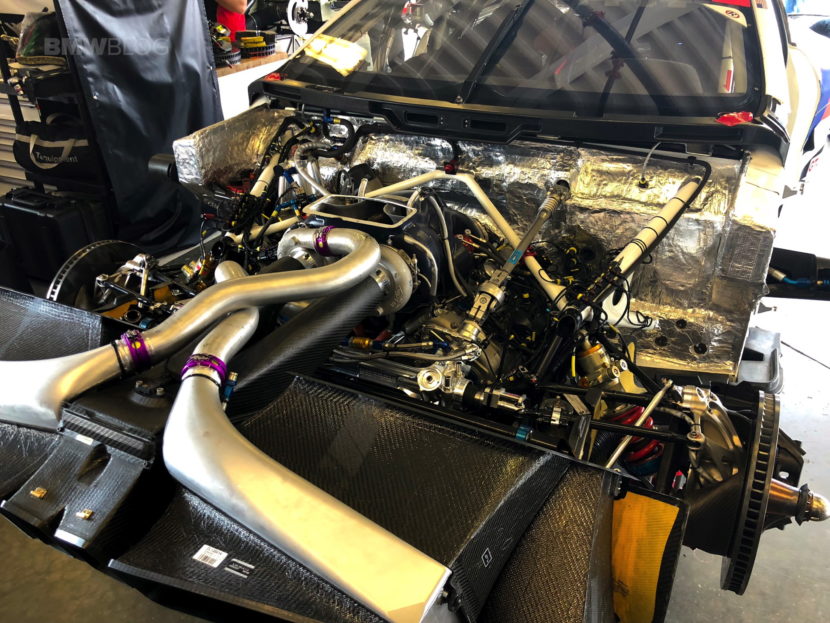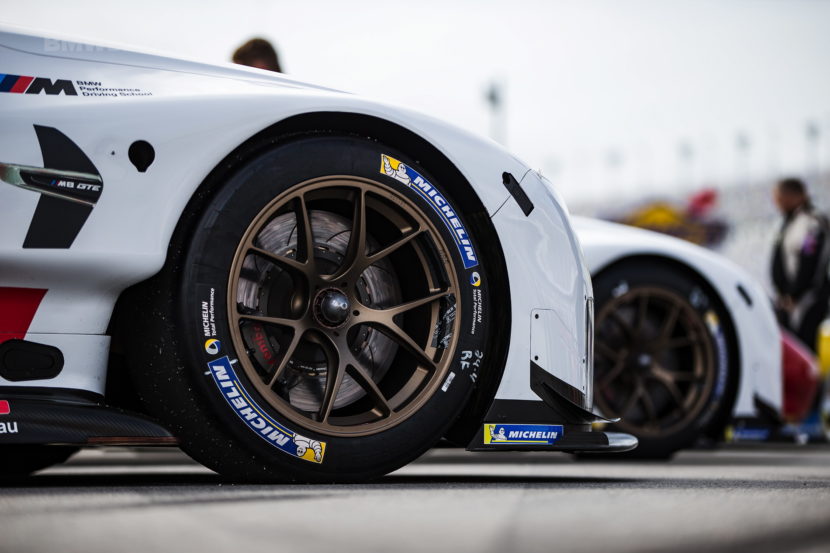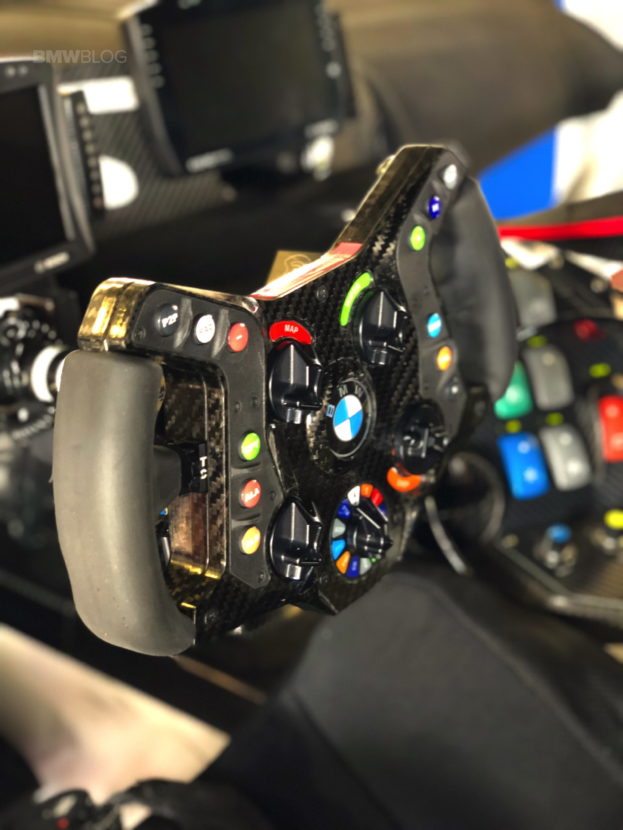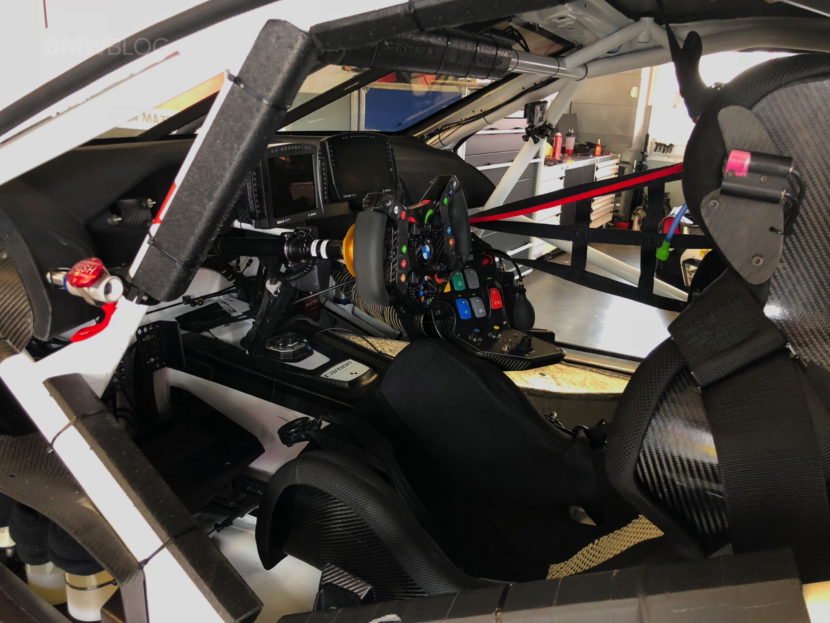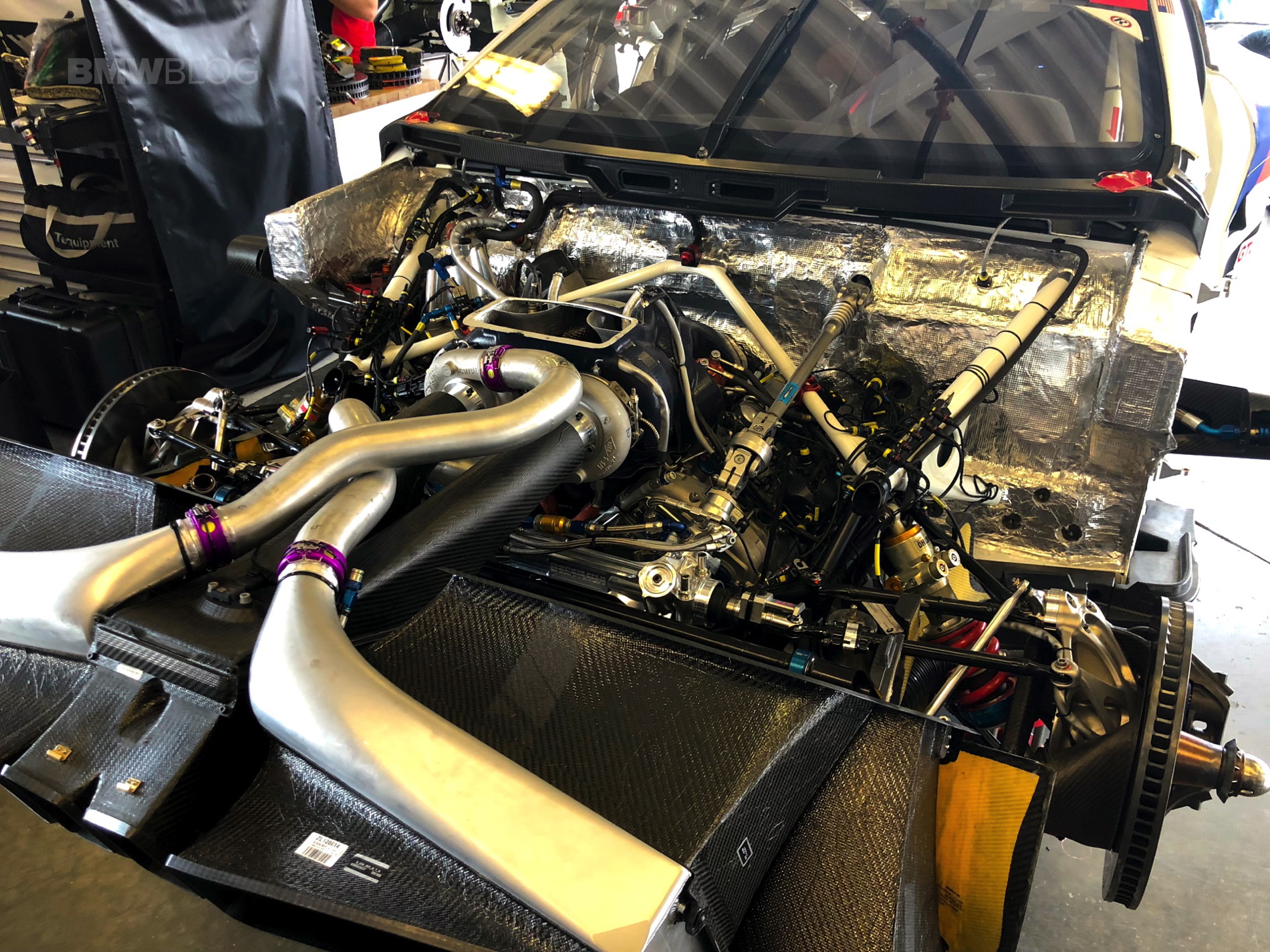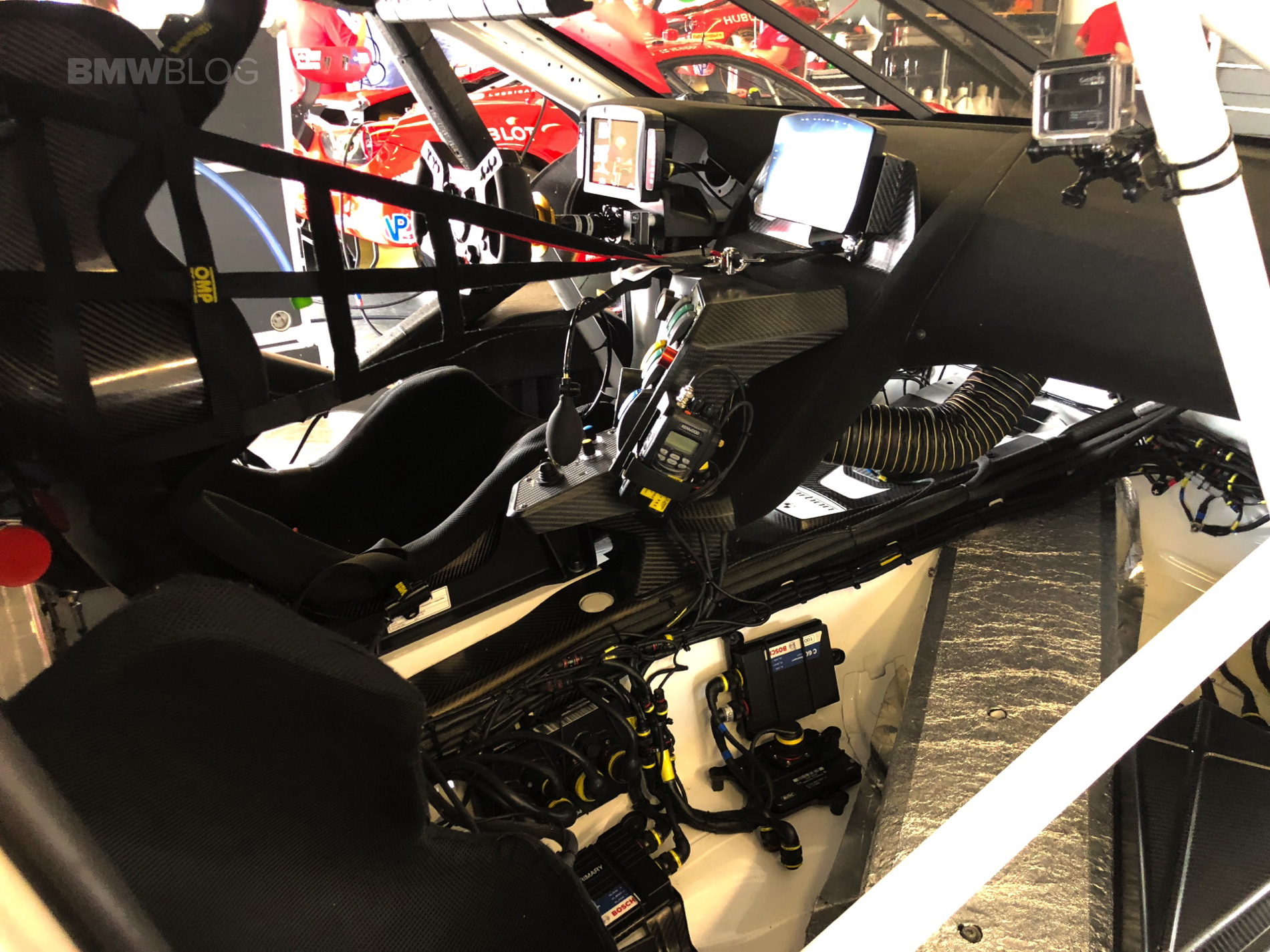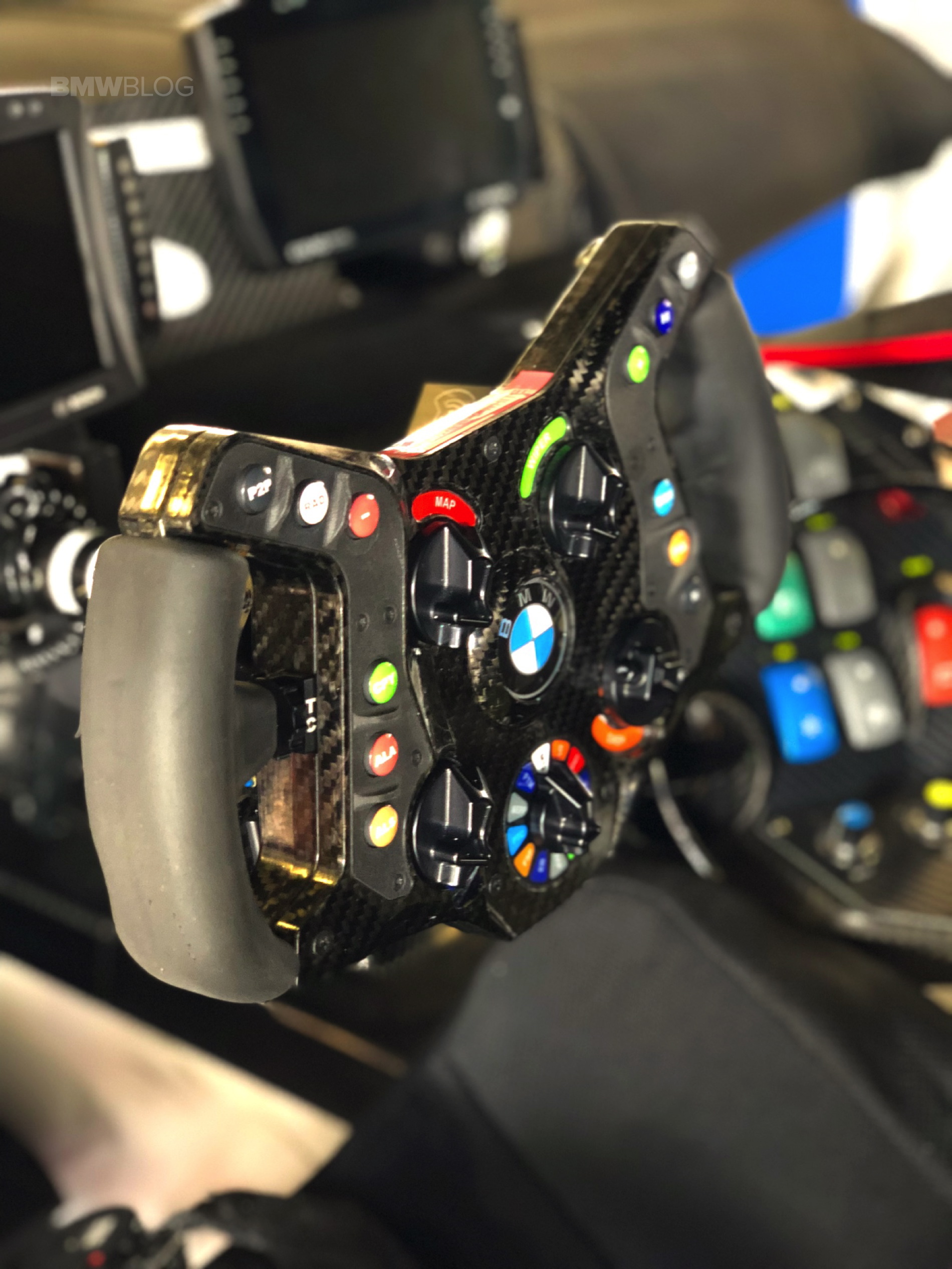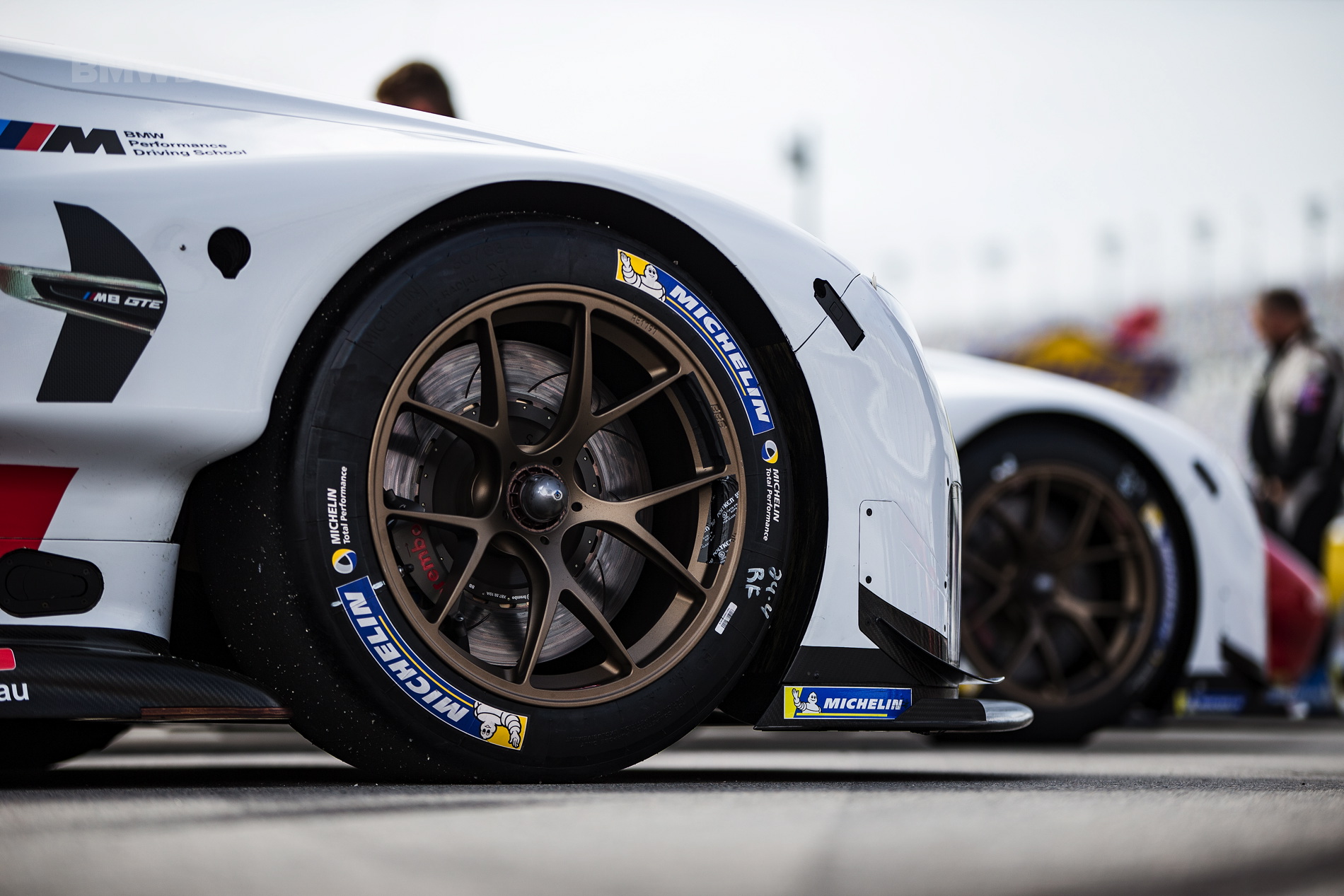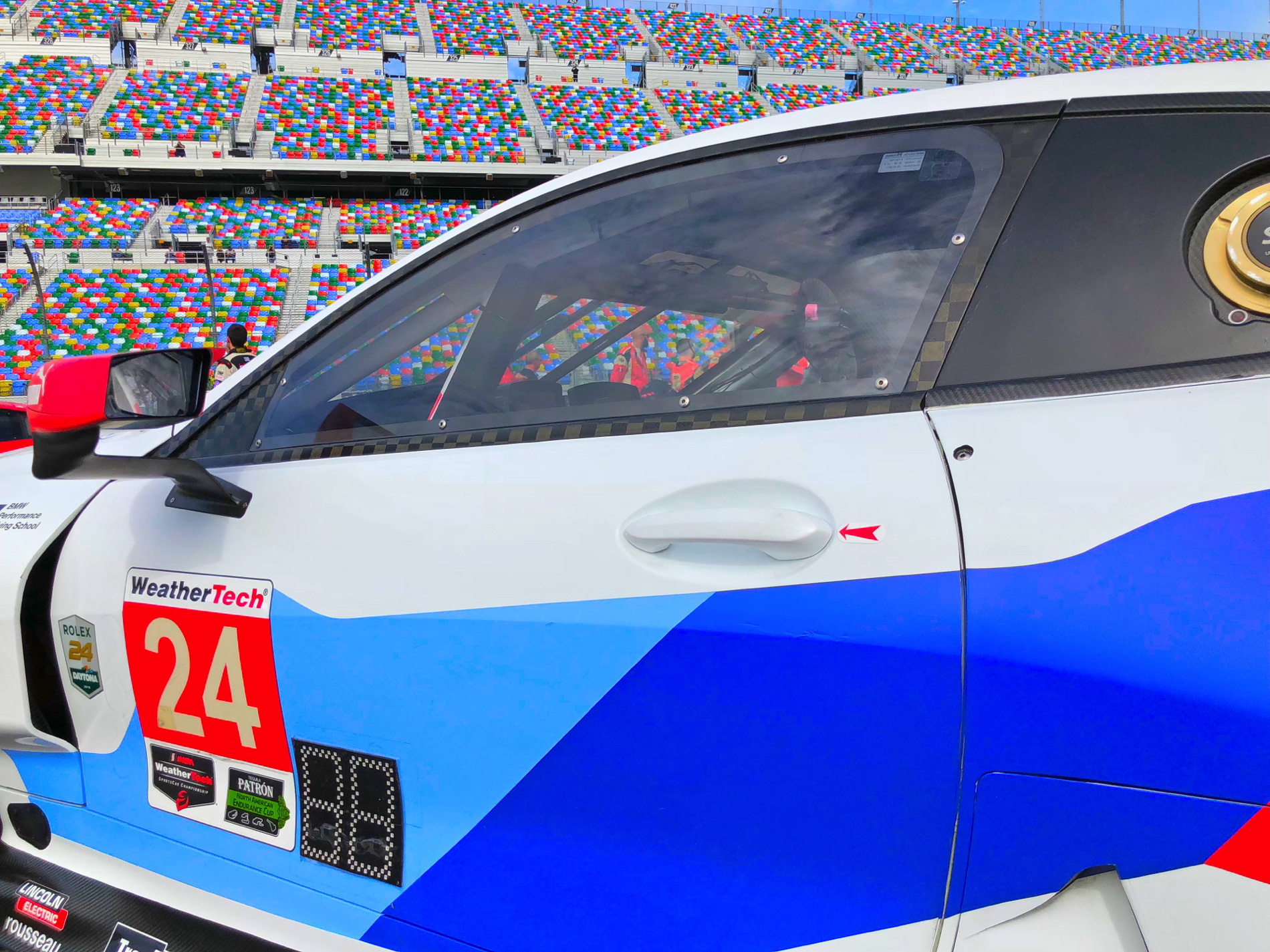There’s been much excitement surrounding the BMW M8 GTE and its official debut at the Rolex 24 Hours of Daytona this past weekend. The reasons for its excitement are two-fold. First, it’s a brand-new endurance racing car for BMW, replacing the good-but-not-great BMW M6 GTLM. So it’s nice to see BMW putting out a new racing machine that’s good enough to put BMW on top in the WEC. Second, it also marks the debut of the long-awaited and desired BMW M8. While this isn’t actually the BMW M8 road car, it’s the closest we’re going to get to that until it finally debuts later this year.
We had the chance to fly to Daytona, thanks to BMW of North America, to spend some time with BMW Motorsport and were allowed to get up close and personal with the stunning M8 GTE, and get a technical tour of the car from BMW Motorsport Director Jens Marquardt. We don’t know if it’s going to be a successful car just yet, as BMW actually ran into some snags in Daytona and didn’t perform as well as BMW would have hoped – mostly because of the Balance of Performance imposed by IMSA – but the brand is optimistic that things will pick up. We do know that it’s a gorgeous machine, though, that’s pure mechanical pornography.
To be honest, if you were to look at any endurance race car, or any race car for that matter, being stripped down and taken apart, it would be mechanical pornography. For anyone who likes machines and mechanics, seeing a car like the M8 GTE stripped down to its nitty gritty is a real treat. Seeing how it’s made, the materials used and the ingenuity it took to create it from a road car is really quite incredible.
Under the hood, the engine lies about as far back as physically possible. In fact, it’s actually bolted directly to the M8 GTE’s chassis, making it a stressed member of said chassis. That allows the car chassis to be far more rigid, helping with turn in and agility, while also reducing a bit of weight. That won’t be in the road car, though, as making the engine a stressed member of the chassis sends all of its vibrations into the passenger cell and that is not enjoyable. At all. Ask any Ferrari F50 owner.
That engine is similar to the one used in the previous BMW M6 GTLM, although it’s been heavily modified since then. Whereas the M6 GTLM’s 4.4 liter twin-turbocharged V8 was about 95-percent production-ready, having very few modifications from the road-going M6’s engine, this new M8 GTE’s P63 engine is about 40-percent related to the production engine, and is seriously upgraded for race-duty. It gets a flat-plane crank, a reduction to 4.0 liters and a more efficient boost control. Thanks to regulations, turbo boost has to be limited, so the M8 GTE actually makes significantly less power than the road-going BMW M8, which is said to make 600 hp or so. But Marquardt says that even the M8 GTE can do up to 600 ponies.
The sequential transmission is manufactured by Xtrac.
But the best part of the engine is looking at it. With the front of the car easily removed, thanks to quick release panels with only a handful of fasteners holding everything on, you get to see the engine in all of its mechanical glory. The turbochargers and their massive plumbing dominates the view, with huge carbon fiber air intakes ahead of them. You can also see the steering rack, Öhlins shocks and massive Brembo brakes. Seeing the level of tech and engineering, purely for the act of going very, very quickly, is a treat. Nothing on the M8 GTE is designed to be pretty but that’s what actually makes it beautiful. It’s pure function over any sort of form.
When the front end goes back on the car, we can see that it has laser headlights, which are not only significantly brighter than LEDs but also project further, helping the drivers to see at night and into the wee hours of the morning. They’re also a touch lighter than the LED units on most road cars and every little bit helps. Plus, they look cool.
At the back, there’s a massive carbon fiber diffuser that’s also part of the belly of the car and it comes off in one gigantic piece, after unbolting just a few fasteners. Pieces need to be removed quickly so as to limit downtime in the pits, so there are as few body panels as possible and they all come off with just a few bolts.
The passenger side of the M8 GTE incorporates a dual exhaust system while the kidney grille is wider and deeper than any of the previous BMW racing cars, clearly a measure to help with the proper cooling of the V8.
Inside, one adjustable component is the pedals while the power-assisted steering stays fixed for all the drivers. The “dashboard” incorporates a radar system to highlight the traffic behind while the rear-view camera aides the driver with his maneuvers. BMW Motorsport ambassador Bill Auberlen says that the M8 GTE is far more easier car to race and handle than the previous M6 GTLM.
The BMW M8 GTE is a stunning machine that’s built to go fast and only to go fast. There’s very little aesthetic to it but that doesn’t mean it’s ugly. It’s a gorgeous car and it gets even prettier when you see how it’s made. It’s both mechanical pornography and artwork.
Click below for a video tour of the BMW M8 GTE:





